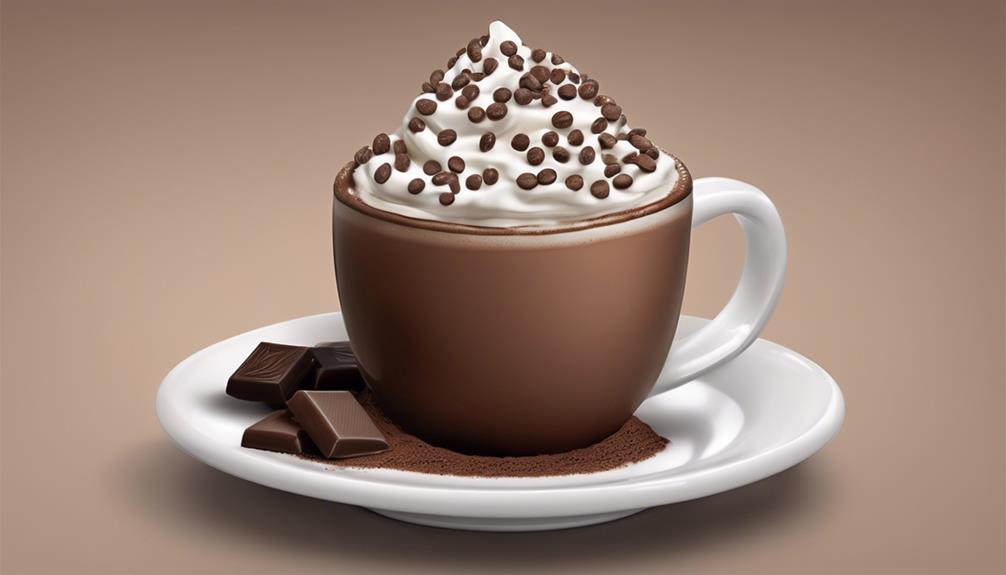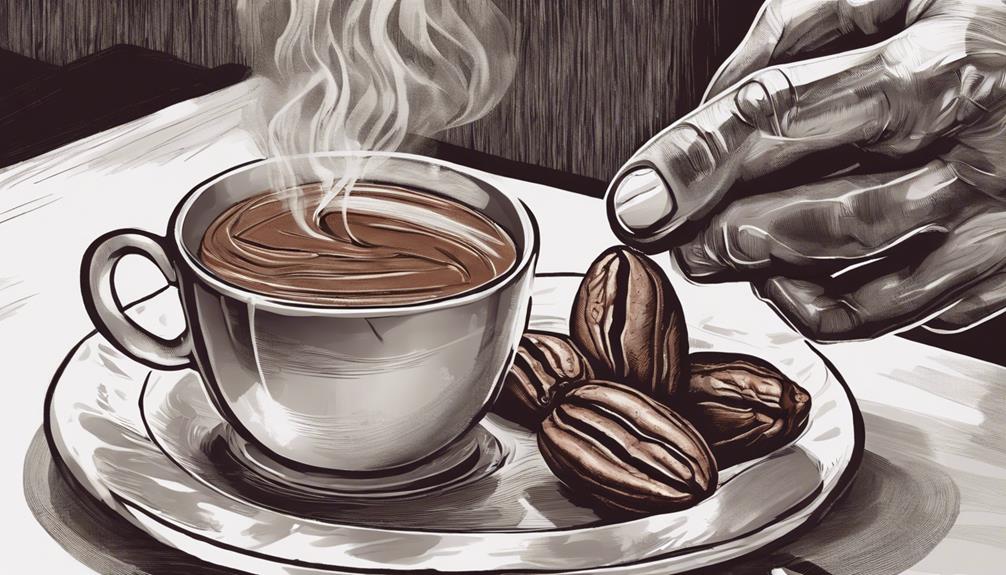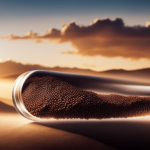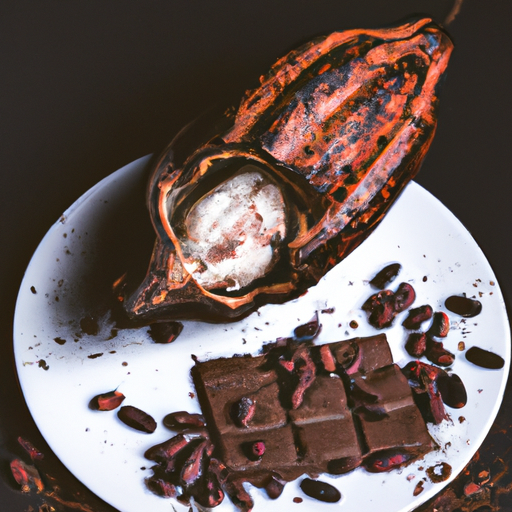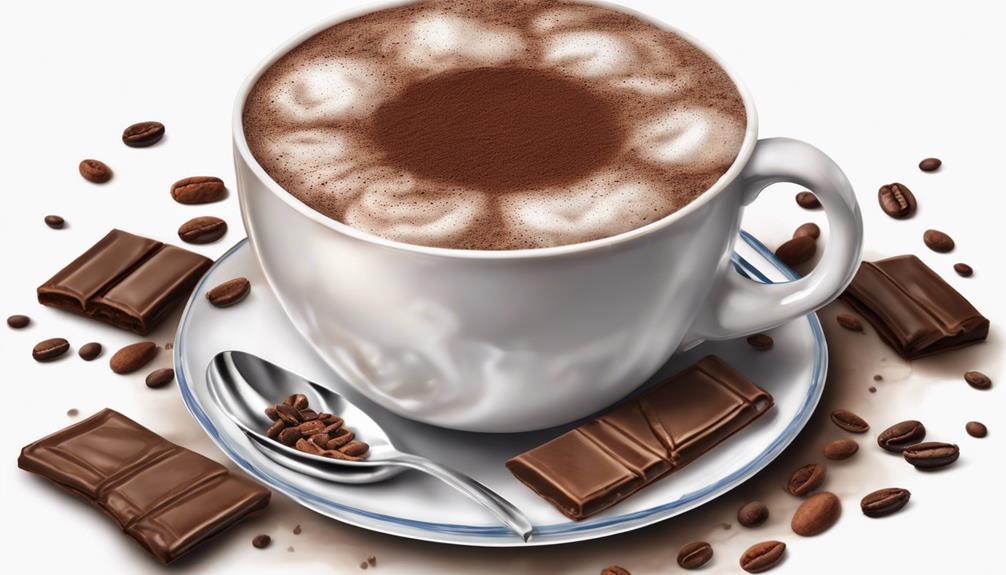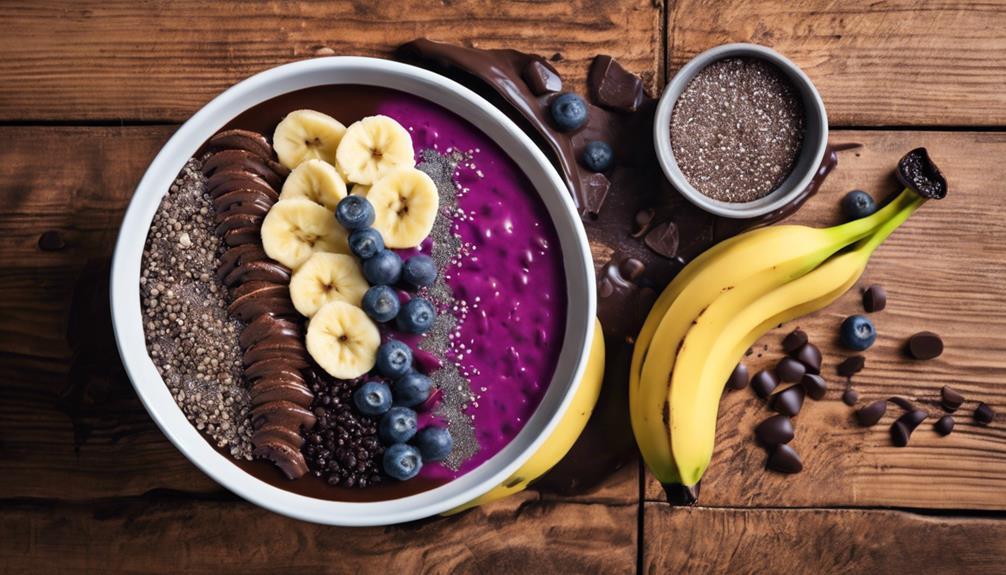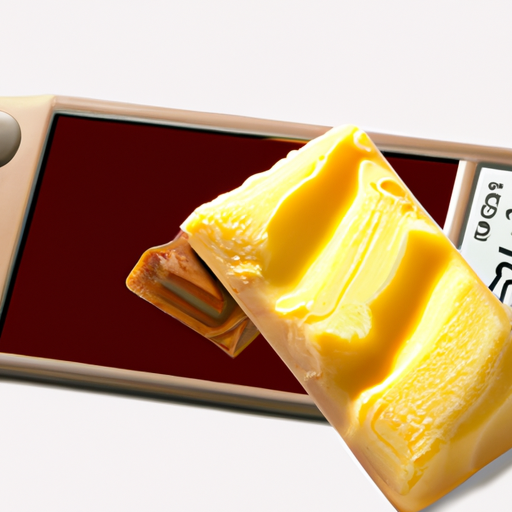Hot chocolate has very little caffeine, typically around 5-15 mg per 8 oz serving. Packaged mixes contain even less, about 5 mg per serving, and a Tall hot chocolate from Starbucks has approximately 20 mg of caffeine. When milk is mixed in, the caffeine in the drink gets diluted. Hot chocolate is a perfect choice for those who want a warm and comforting drink without the jolt of caffeine.
Key Takeaways
- Hot chocolate typically contains minimal caffeine, around 5-15 mg per serving.
- Packaged mixes have 5 mg or less of caffeine per serving.
- Starbucks' Tall hot chocolate has around 20 mg of caffeine.
- Caffeine content is diluted when milk is added.
- Hot chocolate is not known for its caffeine content.
Hot Chocolate and Caffeine Content
When I indulge in a cozy cup of hot chocolate, I enjoy knowing that it typically contains around 5-15 mg of caffeine per 240 ml serving.
The amount of caffeine in hot chocolate can vary depending on the type of chocolate and cocoa powder used. If you're someone who's mindful of your caffeine consumption, hot chocolate is a good choice as it usually has lower caffeine levels compared to tea, coffee, and most soft drinks.
Some hot chocolates may have a higher caffeine content, like Starbucks' Tall hot chocolate, which contains about 20 mg of caffeine per serving.
The percentage of cocoa in the hot chocolate mix can also influence the caffeine levels, so it's crucial to check the ingredients if you're looking to manage your caffeine intake.
Next time you sip on a cup of hot chocolate, take a moment to appreciate the comforting warmth and the delightful taste without worrying too much about your caffeine intake.
Caffeine Levels in Hot Chocolate
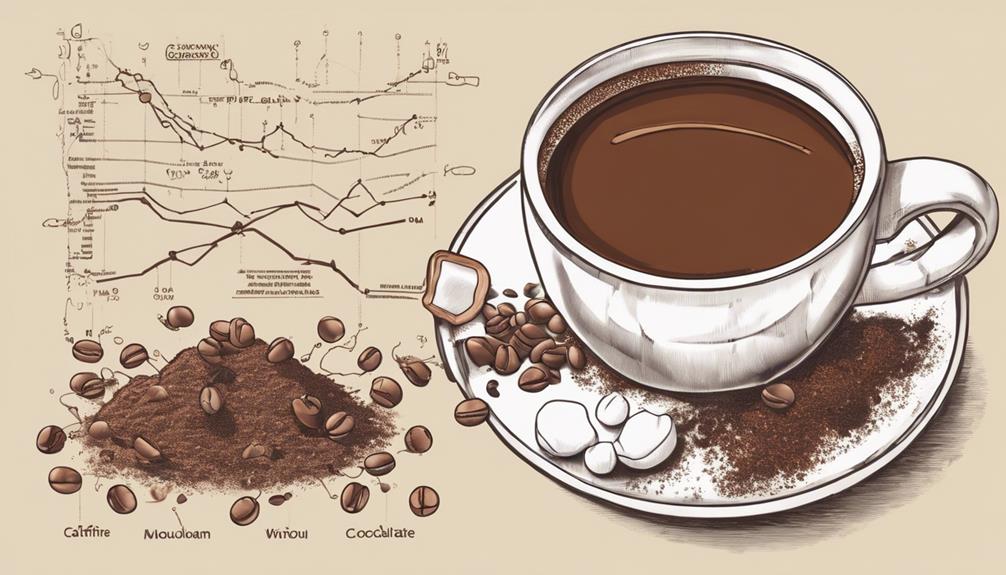
Hot chocolate typically contains minimal caffeine, making it a suitable choice for those looking to limit their caffeine intake compared to other popular beverages like tea, coffee, and soft drinks. Packaged mixes usually have 5 mg or less of caffeine per serving. Even a tall Starbucks hot chocolate, known for its creamy indulgence, contains only around 20 mg of caffeine, making it a low-caffeine option.
When milk is added to hot chocolate, it can further dilute the caffeine content. This is good news for those sensitive to caffeine or looking for a milder alternative. While hot chocolate is a comforting treat, it isn't as caffeinated as tea, coffee, or most soft drinks, making it a soothing choice for cozy evenings or chilly days.
Hot Chocolate Vs Caffeinated Beverages
Compared to highly caffeinated beverages like coffee and tea, hot chocolate offers a comforting option with much lower levels of caffeine. A warm cup of hot chocolate typically contains around 5-15 milligrams of caffeine per 240ml serving. In contrast, a cup of coffee can contain anywhere from 95 to 200 milligrams of caffeine in the same serving size, making it much more caffeinated than hot chocolate. Tea falls in between, with caffeine levels ranging from 20 to 60 milligrams per 240ml serving, still more caffeinated than hot chocolate. Below is a comparison table showcasing the caffeine content in each beverage:
| Beverage | Caffeine Content (mg) |
|---|---|
| Hot Chocolate | 5-15 |
| Coffee | 95-200 |
| Tea | 20-60 |
Hot chocolate stands out as a delightful choice for those seeking a soothing drink with lower caffeine content compared to coffee and tea. Remember, moderation is key when consuming caffeine per day.
Understanding Hot Chocolates Caffeine Content
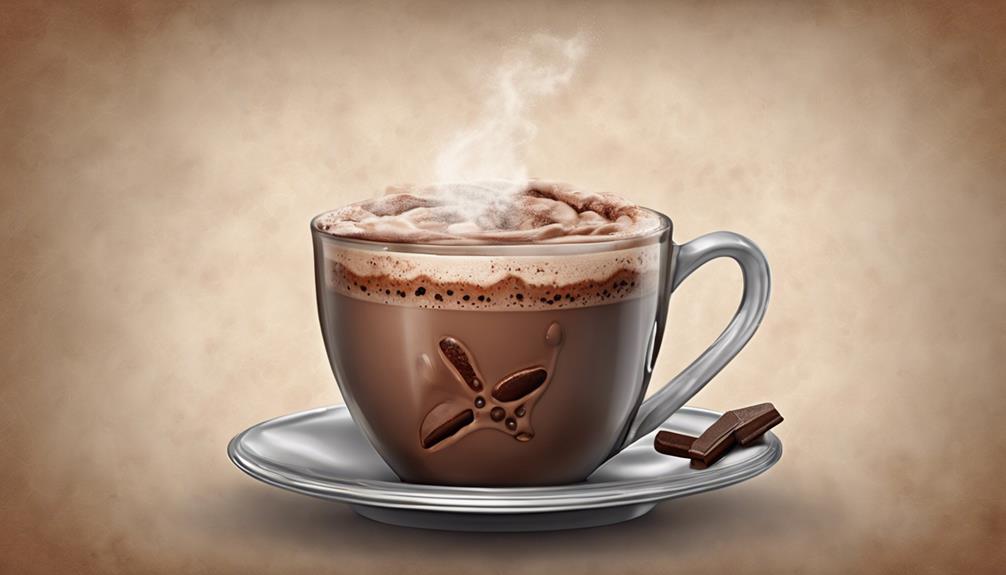
Exploring the caffeine content of hot chocolate reveals varying levels influenced by factors like cocoa type, brand, and portion size. Hot chocolate depends on the type of cocoa used, with typical servings containing around 5-15mg of caffeine per 240ml. This amount can vary among brands and hot chocolate recipes, so it's crucial to check labels if you're monitoring your caffeine intake.
Compared to coffee and tea, hot chocolate has lower caffeine levels, making it a milder option for those looking to reduce their caffeine intake. Packaged hot chocolate mixes generally contain 5mg or less of caffeine per serving, which is notably lower than what you'd find in a typical cup of coffee.
Adding milk to your hot chocolate can dilute the caffeine content further, providing a soothing and comforting beverage without too much caffeine. So, if you're sensitive to caffeine or simply looking to enjoy a warm drink without an excessive amount of caffeine, hot chocolate can be a delightful choice.
Exploring Caffeine in Hot Chocolate
Indulging in a cup of hot chocolate offers a delightful way to enjoy a comforting beverage with a modest amount of caffeine. When it comes to the caffeine content in hot chocolate, there are a few key points worth noting:
- Variation in Cocoa: The caffeine content in hot chocolate can vary depending on the type of cocoa used. Darker chocolate tends to have more caffeine than milk chocolate varieties.
- Packaged Mixes: Packaged hot chocolate mixes typically contain 5mg or less of caffeine per serving, making them a suitable choice for those looking to limit their caffeine intake.
- Milk Dilution: Adding milk to your hot chocolate can dilute the caffeine content, making it a milder option for those sensitive to caffeine.
- Starbucks Comparison: A tall Starbucks hot chocolate contains around 20mg of caffeine per serving, which falls within the typical range for hot chocolate beverages.
Hot Chocolate Caffeine Comparison
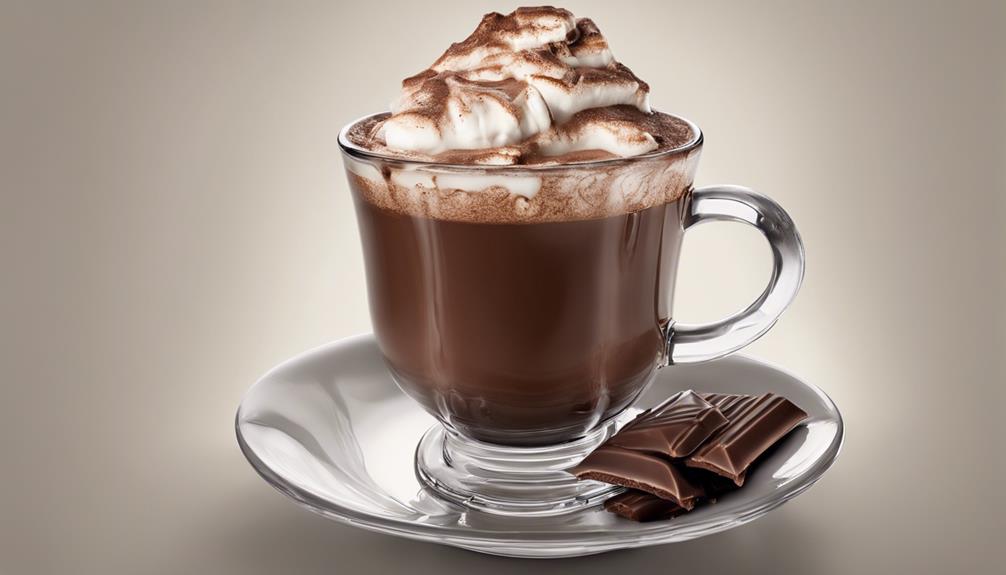
Hot chocolate, with its comforting flavor and subtle caffeine kick, offers a delightful choice for those seeking a milder alternative to coffee or tea. When comparing the caffeine content, hot chocolate typically contains between 5-15mg of caffeine per 240ml serving, making it lower in caffeine compared to coffee and tea.
For instance, a Tall hot chocolate from Starbucks has around 20mg of caffeine. The caffeine levels in hot chocolate can vary depending on factors such as the type of cocoa used and the preparation method. Despite these variations, hot chocolate remains a popular choice for a comforting beverage with a lower caffeine content.
Hot Chocolates Caffeine Content Explained
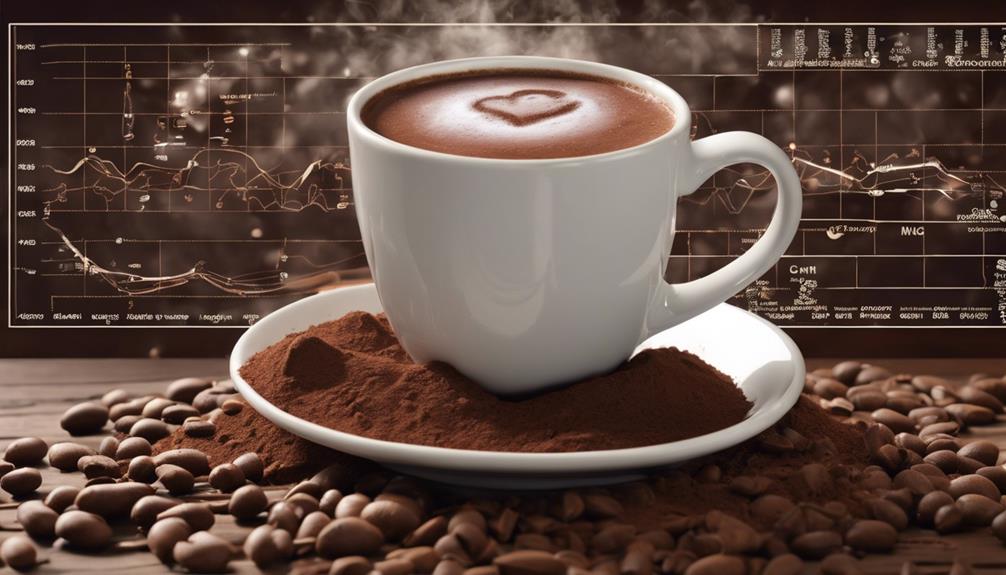
When contemplating the caffeine content of hot chocolate, it's crucial to note the range of 5-15 mg per 8 oz. serving and how factors like cocoa type and brand influence these levels. Here's a breakdown to assist you in understanding hot chocolate's caffeine content:
- Cocoa Type: The kind of cocoa utilized in hot chocolate can impact its caffeine levels. Darker cocoa varieties generally contain more caffeine than lighter ones.
- Brand Influence: Various brands may have different caffeine levels in their hot chocolate mixes. It's vital to check the packaging for specific information.
- Milk Dilution: Incorporating milk into your hot chocolate can lessen the caffeine content per serving. This is significant to think about if you're aiming to decrease your caffeine intake.
- Starbucks Exception: While most hot chocolates contain 5-15 mg of caffeine per serving, Starbucks' Tall hot chocolate stands out with approximately 20 mg of caffeine. Be cautious of this if you're sensitive to caffeine.
Understanding these factors can help you make well-informed choices about the caffeine content in your preferred hot chocolate beverages.
Decoding Hot Chocolates Caffeine
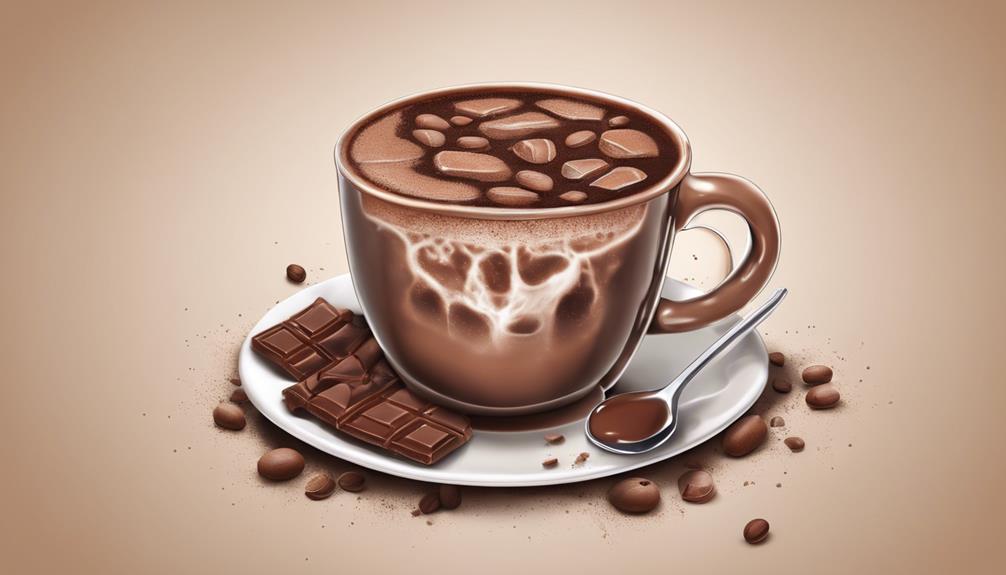
Typically, the caffeine content in hot chocolate ranges from 5-15 mg per 8 oz. serving. When choosing hot chocolate mixes, keep in mind that packaged ones usually have 5 mg or less of caffeine.
However, if you opt for a Starbucks hot chocolate, like a Tall size, it may contain around 20 mg of caffeine. The caffeine content in hot chocolate can vary depending on the brand and how it's prepared. Adding milk chocolate or cocoa solids to your hot chocolate can also affect the caffeine levels, as the milk can dilute it.
It's important to be mindful of your caffeine intake, as too much can lead to side effects like restlessness or difficulty sleeping. Remember to stick to the recommended daily caffeine limit, especially when enjoying your favorite cup of hot chocolate.
Hot Chocolates Caffeine Myth
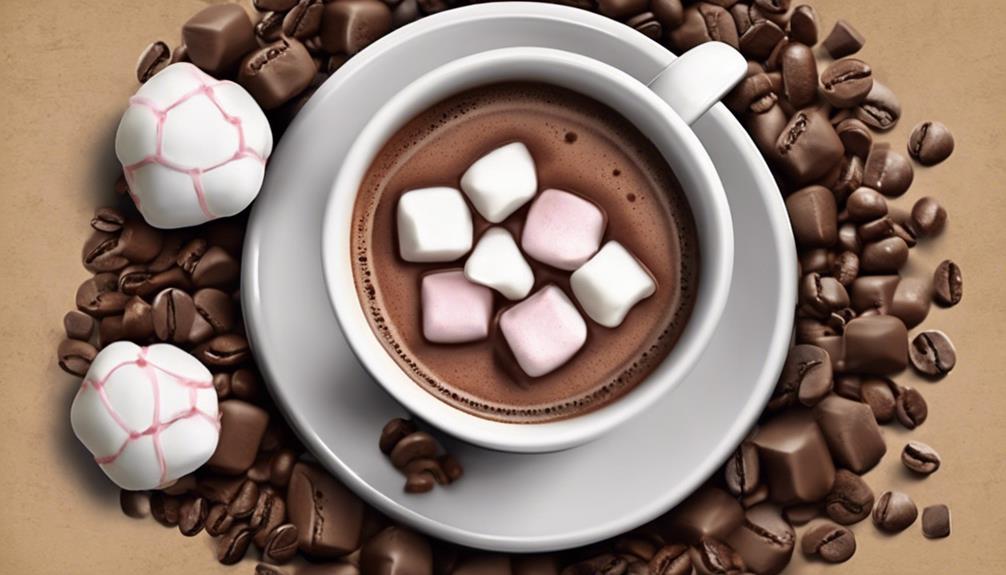
Decoding the myth surrounding hot chocolate's caffeine content reveals its minimal impact compared to other caffeinated beverages like coffee and tea. When it comes to hot chocolate, the caffeine content is quite low, making it a comforting choice for those looking to avoid too much stimulation. Here's why the caffeine myth around hot chocolate is just that – a myth:
- Hot chocolate typically contains minimal caffeine, with most packaged mixes having 5 mg or less per serving.
- Starbucks' Tall hot chocolate has around 20 mg of caffeine, notably lower than coffee.
- The caffeine content in hot chocolate is diluted when milk is added, making it a less caffeinated option.
- Hot chocolate isn't known for its caffeine content; it's more popular for its comforting and indulgent qualities.
Frequently Asked Questions
Does Hot Chocolate Have a Lot of Caffeine?
Hot chocolate doesn't have a lot of caffeine. It typically has 5-15mg per serving, less than coffee. However, Starbucks' Tall hot chocolate has around 20mg. The caffeine content varies based on brand and prep.
Does Hot Chocolate Keep You Awake Like Coffee?
Oh, hot chocolate, my cozy companion. It doesn't keep me up like coffee does. With its gentle touch of theobromine and minimal caffeine, it's the soothing sip that wraps me in warmth without the jitters.
Can You Get Hot Chocolate Without Caffeine?
Yes, you can get hot chocolate without caffeine. By choosing decaffeinated cocoa or chocolate and opting for caffeine-free hot chocolate mixes, I can enjoy a soothing and comforting beverage without the effects of caffeine.
Is There More Caffeine in Hot Chocolate Than Decaf Coffee?
There's more caffeine in decaf coffee than hot chocolate. Hot chocolate usually has 5-15mg per 8 oz, while decaf coffee contains around 2mg. So, if you're watching your caffeine intake, go for hot chocolate over decaf coffee.
– Does Hot Chocolate Have a Higher Melting Point Than Regular Chocolate?
Yes, hot chocolate has a higher melting point than regular chocolate. This is because hot chocolate is a liquid, while regular chocolate is solid at room temperature. When you drink hot chocolate, it melts in your mouth because of the warmth, which is why chocolate melts mouth.
Conclusion
To sum up, hot chocolate doesn't usually contain caffeine. However, it's important to check the label or ask the barista if you're uncertain.
Keep in mind, when indulging in a steaming cup of hot chocolate, you can appreciate the decadent and velvety flavor without fretting about the burst of caffeine.
Stay tuned for more fascinating facts about your preferred beverages!

